Salmon is a popular fish that is enjoyed by many people all over the world. It is rich in nutrients, including omega-3 fatty acids, protein, and vitamin B12. Whether grilled, baked, or poached, cooked salmon is a delicious and healthy meal that can be prepared in many ways. However, one question that many people have is, how long does cook salmon last in the fridge? Knowing the storage life of cooked salmon is important to avoid food spoilage and ensure the safety of the dish. In this article, we will explore how long cooked salmon can last in the fridge, factors that affect its storage life, and tips on how to store it to prevent spoilage properly.
Why Should You Refrigerate Cooked Salmon?
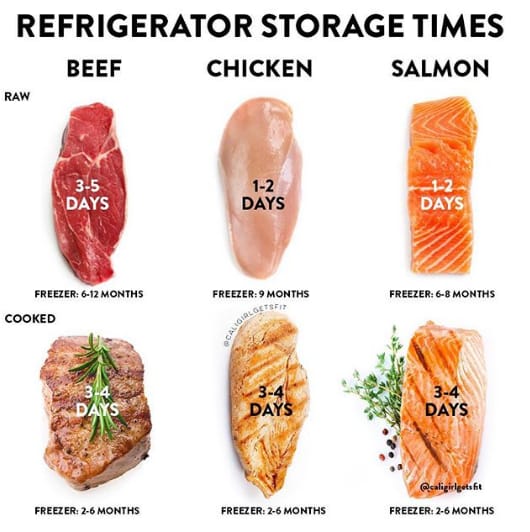
Cooked salmon is one of the most popular seafood dishes in the world. Millions of people enjoy it daily, and it’s a great source of protein and essential nutrients. But do you know that after cooking, you should refrigerate salmon? It’s the best way to preserve its flavor and texture and keep it safe to eat.
For starters, when you cook salmon, its natural enzymes are denatured, which means they can no longer perform their intended functions. This makes cooked salmon very susceptible to spoilage. If left out at room temperature for more than two hours, it can begin to spoil and become unsafe to eat. Refrigerating cooked salmon can help prevent this.
Additionally, refrigerating cooked salmon helps to maintain its flavor and texture. When cooked, salmon develops a delicious and savory flavor, so it’s important to keep it tasting its best. It can become dry, tough, and unappetizing if left at room temperature. By refrigerating it, you can keep it tasting as fresh and delicious as it did when it first came out of the oven.
Finally, refrigerating cooked salmon can help to ensure its safety for consumption. Refrigeration slows the growth of harmful bacteria, and it’s the best way to ensure that salmon is safe to eat. If you don’t refrigerate cooked salmon, you risk it becoming contaminated with bacteria, making you or anyone else who eats it ill.
How Long Does Cooked Salmon Last In The Fridge?
If you’re a fan of salmon, you may wonder how long cooked salmon can last in the fridge. According to the USDA, cooked salmon can be safely stored in the refrigerator for three to four days, assuming it has been properly stored in an airtight container. To ensure the longevity of your cooked salmon, it’s essential to handle it correctly and store it in the fridge promptly. If you wish to keep your cooked salmon for longer than four days, you may consider freezing it. Overall, cooked salmon can be a safe and delicious option in the fridge for up to four days.
How Long Does Cooked Salmon Last In The Freezer?
To be factual, cooked salmon can last in the freezer for up to 3 months. However, it is important to properly store the salmon in an airtight bag or container to prevent freezer burn and maintain its quality for as long as possible.
Once ready to eat, thaw it in the refrigerator overnight before reheating it. And remember, when it comes to food safety, it’s always better to be safe than sorry, so make sure to check for any signs of spoilage before consuming it. So don’t hesitate to freeze your cooked salmon. It can make for a great meal!
What Is The Recommended Temperature To Store Cooked Salmon In The Fridge To Extend Its Freshness?
The recommended temperature to store cooked salmon in the fridge is below 40°F or 4°C. This temperature helps to prevent the growth of bacteria and other microbes that can cause food poisoning if left unchecked. To further keep cooked salmon fresh, it’s best to refrigerate it within two hours of cooking or one hour if the temperature is over 90°F (32°C).
Following these guidelines, one can enjoy their cooked salmon in the fridge for up to 3 to 4 days. For longer shelf life, one may consider freezing the salmon. To ensure optimal freshness and safety, it’s recommended to use containers or storage wraps that help keep food cool for extended periods.
Does Adding Lemon Or Lime Juice To Cooked Salmon Help It Last Longer In The Fridge?
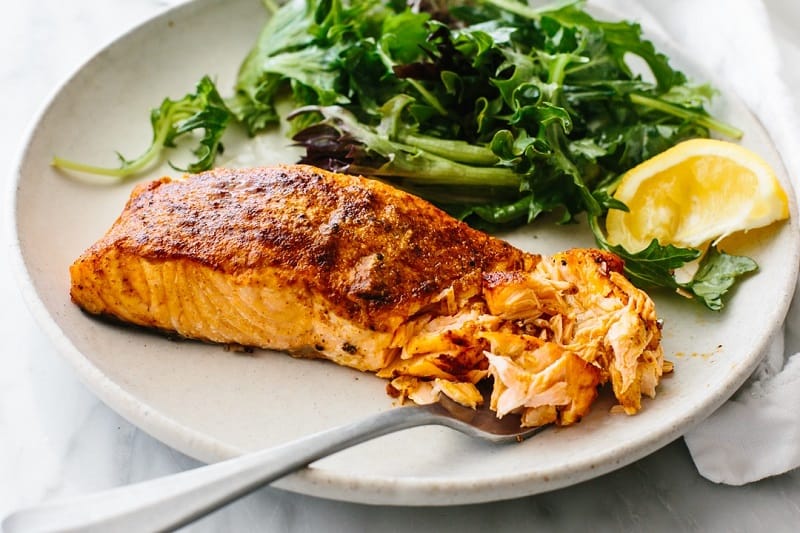
The answer is yes. Adding lemon or lime juice to cooked salmon can help it last longer in the fridge. The acidic content in lemon and lime juice helps slow the rate at which bacteria grows on cooked salmon. Bacteria is the main culprit behind food spoilage.
When storing cooked salmon in the fridge, keeping it tightly wrapped in a container or plastic wrap is important. This helps prevent bacteria from growing on the surface. Adding a few tablespoons of lemon or lime juice to the salmon can help minimize the chances of bacteria growth.
It is important to note that adding lemon or lime juice to cooked salmon does not make it last forever. Cooked salmon should still be consumed within 2-3 days. Any cooked salmon sitting in the fridge for longer than that should be discarded.
How Long Can You Safely Leave Cooked Salmon Out At Room Temperature Before It Needs To Be Refrigerated?
If you’re wondering how long you can leave cooked salmon out at room temperature before it needs to be refrigerated, the answer is only two hours. After that, there’s a risk of bacteria growth which can lead to foodborne illnesses. However, this may vary depending on the temperature of the surrounding area. In warmer temperatures, it’s best to refrigerate cooked salmon immediately after consuming it to avoid any chances of bacterial growth.
It’s important to note that reheated salmon should also be consumed within two hours after reheating to prevent any potential health risks. Always remember that cooked food should never be left out at room temperature for more than two hours for proper food safety.
Related Reading:
- How Long Does Ground Turkey Last In The Fridge
- How Long Does Beef Jerky Last
- How Long To Bake Salmon At 400
How Long Will Pre-Packaged Cooked Salmon Last In The Fridge Compared To Homemade?
Pre-packaged cooked salmon last in the fridge at a temperature of less than one °C for two to three days. On the other hand, homemade cooked salmon can last 3-4 days in the refrigerator but is best used within the first two days. It is important to note that fresh, uncooked salmon can also be stored in the fridge for up to two days before cooking, while it can stay good in the freezer for up to six to eight months, but only when kept in a cool place.
How To Tell When Cooked Salmon Go Bad?
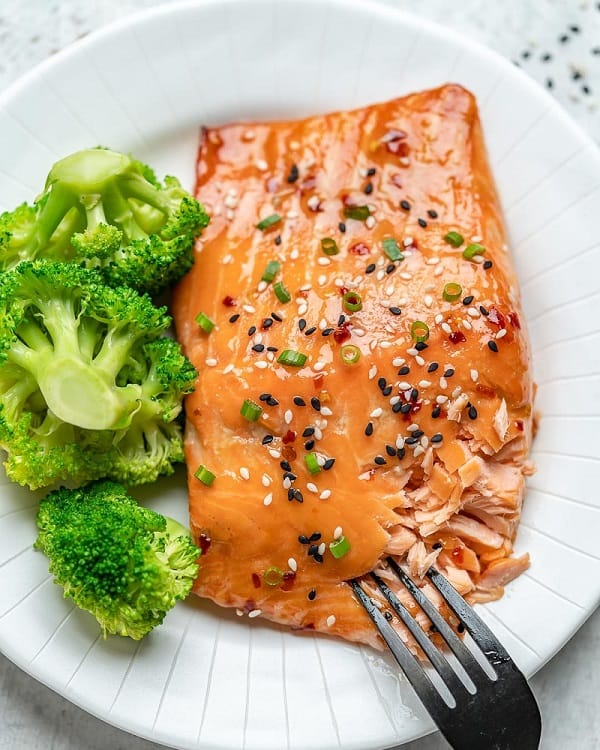
Cooking salmon can be an art form, but knowing when your cooked salmon has gone bad is essential. Knowing when to throw away cooked salmon can mean the difference between a delicious dinner and a health hazard.
When cooked salmon has gone bad, it’s typically easy to tell. But before we get into the signs of bad salmon, it’s important to understand some of the basics of food safety.
The first thing to know is that cooked salmon should be eaten within two days. After that, it’s important to refrigerate any leftovers or freeze them for later use.
Now for the signs that your cooked salmon might have gone bad. The first is an off smell. Cooked salmon should never have an unpleasant odor; if it does, it’s best to throw it out. Another sign is a slimy texture. Cooked salmon should have a firm texture and not be slimy at all. Additionally, if your cooked salmon starts to turn brown or gray, it’s a sign that it’s gone bad and should be discarded.
If you’re unsure about the safety of your cooked salmon, the best way to tell is to err on the side of caution and throw it out. It’s better to be safe than sorry regarding food safety.
What Are The Health Risks Of Eating Salmon That Has Gone Bad?
We all know that salmon is a delicious and nutritious food. But what happens when it goes bad and we don’t realize it? Eating salmon that has gone bad can lead to some very serious health risks.
The most common health risk associated with eating spoiled salmon is food poisoning. This can be caused by bacteria such as Salmonella, E. coli, or Listeria. These bacteria can be present in raw or undercooked salmon, so it’s important to ensure it’s cooked thoroughly before consumption. If unsure, it’s best to err on caution and throw it out.
Another health risk associated with eating spoiled salmon is allergic reactions. If you’re allergic to fish, eating spoiled salmon can cause uncomfortable symptoms such as hives, swelling, and difficulty breathing. If you experience any of these symptoms, seek medical attention immediately.
Finally, eating spoiled salmon can also lead to more severe health issues such as kidney failure, paralysis, or even death. This is due to toxins such as mercury and PCBs in the salmon. It’s important to be aware that these toxins are not killed off by cooking, so it’s best to avoid eating fish sitting in the fridge for too long.
What Are Some Tips For Using Up Leftover Cooked Salmon Before It Goes Bad?
Here are some tips for using leftover cooked salmon before it goes bad.
- Make a Salmon Salad. A salad is a great way to repurpose cooked salmon. Just flake the leftover cooked salmon and mix in some chopped vegetables, like red onions, cucumbers, and tomatoes. Drizzle a light dressing over the top, and enjoy!
- Add It to a Sandwich. Add your cooked salmon to a sandwich for an easy and delicious meal. Add flaked salmon, lettuce, tomato, and mayo to a whole wheat bun for a healthy lunch.
- Make Salmon Cakes. Making salmon cakes is a great way to use up leftovers. Combine your cooked salmon with chopped onion and bell pepper, breadcrumbs, a beaten egg, and a dash of salt and pepper. Form into small patties and fry in butter or oil until golden brown.
- Serve It On Toast. Toast some whole grain bread and top with your cooked salmon. You can then add some capers, diced red onion, or a squeeze of lemon juice to boost the flavor.
- Create a Salmon Souffle. For a delicious dinner option, you can make a salmon soufflé. Just combine some cooked salmon with grated cheese, eggs, and a splash of cream. Bake in the oven for about 25 minutes, and enjoy!
How To Reheat Cooked Salmon?
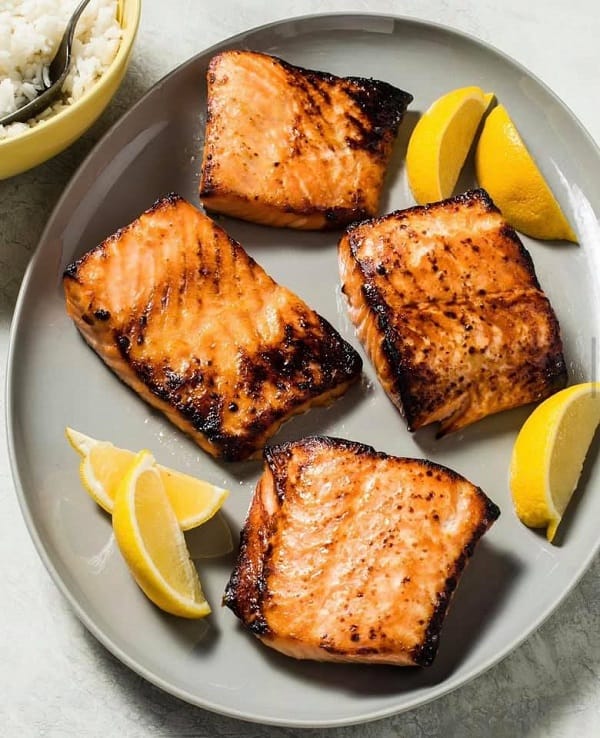
Reheating cooked salmon can be tricky, but with a few simple steps, you can enjoy your meal without worry.
The first step to reheating cooked salmon is to make sure you thaw the salmon completely. Place the salmon in the refrigerator overnight, or if you’re in a hurry, place it in a bowl of cold water. This will help to thaw the salmon evenly, so it won’t be soggy or dry when reheated.
Once the salmon is thawed, the next step is to heat the oven to 350 degrees Fahrenheit. Place the salmon on a baking sheet and cover it with aluminum foil. Bake the salmon for about 10 minutes or until the center is warm. You can also use a microwave, but cover the salmon with plastic wrap or wax paper to avoid splatter.
When the salmon is heated through, it’s ready to be enjoyed. If you want to add a little flavor, you can top the salmon with some fresh herbs, lemon juice, or a sauce of your choice.
When it’s time to store the leftovers, refrigerate the cooked salmon within two hours of cooking. The salmon should be covered tightly with plastic wrap or stored in an airtight container. Reheated cooked salmon will keep in the refrigerator for up to four days.
Does The Type Of Seasoning Used On Cooked Salmon Affect How Long It Lasts In The Fridge?
When it comes to storing cooked salmon, there are many factors to consider that can affect how long it stays fresh. One common question is whether the seasoning used on cooked salmon affects how long it lasts in the fridge.
According to facts, seasoning salmon with salt can extend its shelf life. However, when it comes to other seasonings, there is no clear evidence to suggest that they impact the salmon’s longevity in the fridge. Ultimately, the key to keeping cooked salmon fresh is refrigerating it within two hours of cooking and consuming it within two to four days. By following these guidelines, you can be confident that your cooked salmon will be safe and delicious, regardless of the seasonings used.
Should You Remove The Skin From Cooked Salmon Before Storing It In The Fridge?
The short answer is it depends. If you want maximum nutrient retention, it’s best to leave the skin on. Salmon is packed with essential fatty acids, vitamins, and minerals necessary for overall health. The skin helps to retain these nutrients and gives the fish a nice flavor. Plus, the skin helps to keep the fish moist and juicy.
However, if you are concerned about bacteria build-up and food safety, it may be better to remove the skin before storing the salmon in the fridge. Bacteria can form on the skin of the salmon, especially when stored in the warm, moist environment of the refrigerator. Removing the skin can help to reduce the risk of bacteria build-up and keep the salmon fresh for longer.
The decision is up to you. If you want maximum nutrient retention, leaving the skin on is best. But removing the skin might be a better option if you’re worried about bacteria build-up. Ultimately, it’s important to consider the quality of the salmon you are using and the length of time you plan to store it in the refrigerator.
Common Mistakes When Storing Cooked Salmon In The Fridge
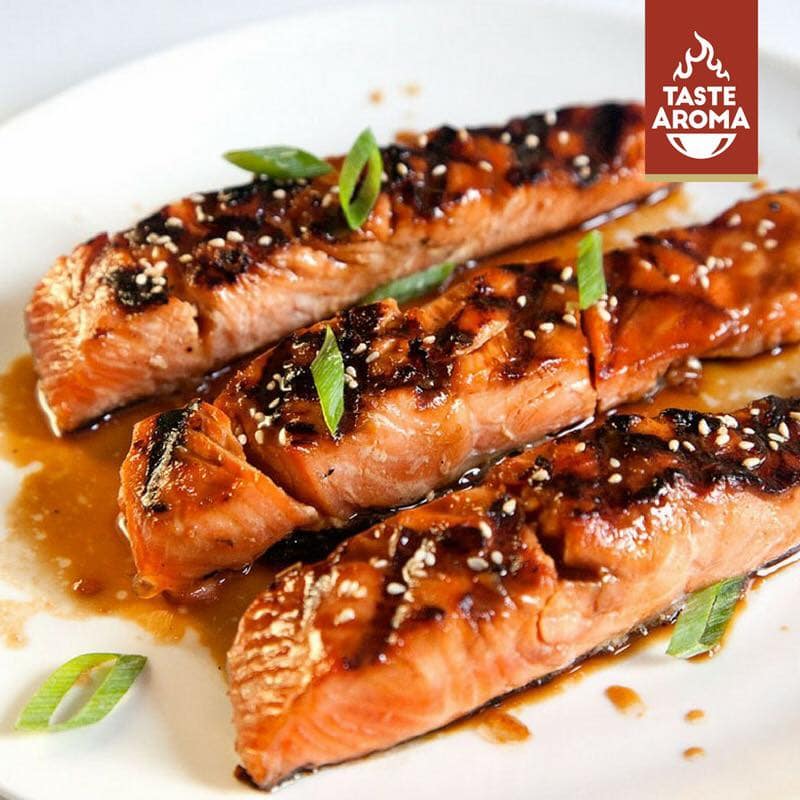
Much like any other type of food, there are certain precautions that you need to take when storing cooked salmon in the fridge. By following the right tips and tricks, you can ensure that your salmon stays fresh and flavorful.
Unfortunately, many people make mistakes when storing cooked salmon in the fridge. To help ensure that your salmon stays as fresh as possible, here are some of the most common mistakes that you should avoid:
1. Not Cooling the Salmon Before Refrigerating.
Whenever you cook salmon, it’s important to make sure that you cool it quickly before refrigerating it. If you don’t, the salmon can become contaminated with bacteria. Ensure you cool the salmon down to room temperature before refrigerating it.
2. Not Storing the Salmon in an Air-Tight Container.
When storing cooked salmon in the fridge, make sure that you put it into an air-tight container. This will help to keep the salmon fresh and tasty for longer.
3. Not Storing the Salmon on the Top Shelf of the Fridge.
When you store cooked salmon in the fridge, make sure that you put it on the top shelf. This will help to keep the salmon away from other foods that may have a stronger smell, such as cheese or garlic.
4. Storing the Salmon for Too Long.
As with other types of food, cooked salmon shouldn’t be stored in the fridge for too long. Try to eat the salmon within 4-5 days of cooking it.
How To Store Cooked Salmon Properly?
Whether buying pre-cooked salmon or preparing it yourself, it’s essential to store it correctly to ensure it’s safe to eat and maintain its flavor. Here’s how you can store cooked salmon properly:
- Let the salmon cool down completely before storing it. If you’ve cooked the salmon, let it cool to room temperature before storing it. This helps to prevent the growth of any harmful bacteria.
- Place the cooked salmon in an airtight container for storage. Remove any excess air from the container and seal it tightly. This will help to keep the salmon fresh and retain its flavor.
- Place the container with the cooked salmon in the refrigerator. This will help to keep it cold and prevent the growth of bacteria.
- Use the cooked salmon within two days. This is the best way to ensure the salmon is still safe.
- You can also freeze cooked salmon. Wrap it in plastic wrap or an airtight container before freezing. This will help to preserve its flavor and texture.
How To Choose High-Quality Fresh Salmon?
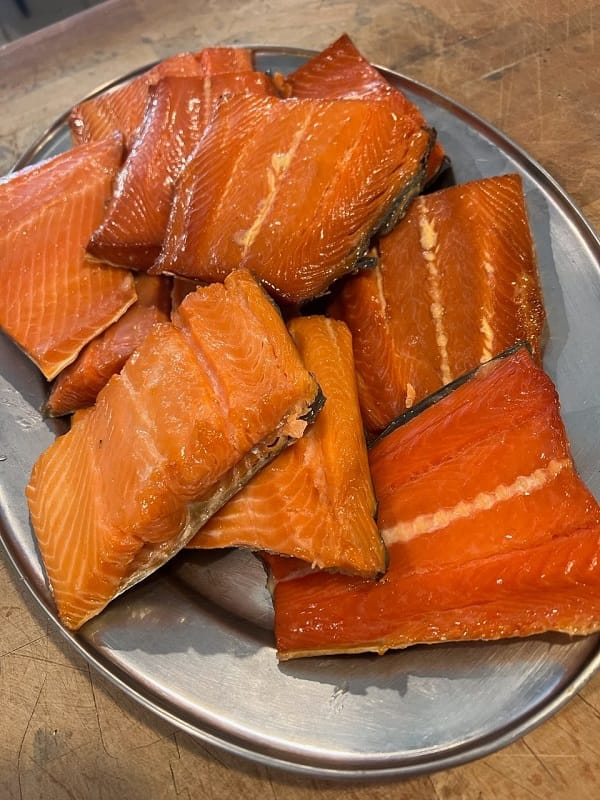
You want to ensure you get the highest quality possible when shopping for salmon. First and foremost, you want to ensure that the salmon you purchase is fresh. The best way to do this is to purchase salmon from a trusted source. Look for a store or market that specializes in seafood and has a good reputation for freshness. Look for signs of freshness, such as bright eyes and a firm texture.
When you have found a source you trust, it’s time to decide which type of salmon you want to buy. There are three main types of salmon. They are Atlantic, Pacific, and Sockeye salmon. Each type of salmon has different characteristics that make them unique.
Atlantic salmon is the most common variety of salmon and is usually farmed. It is known for its mild flavor and is typically sold as fillets or steaks.
Pacific salmon is wild-caught and generally considered of higher quality than farmed salmon. It is known for its rich flavor and is usually sold as steaks or fillets.
Finally, Sockeye salmon is wild-caught and is usually higher in fat than the other two varieties. It has a strong flavor and is usually sold as steaks or fillets.
Once you have decided which type of salmon you want to buy, you must also consider how it is packaged. You want to make sure that the salmon is well-sealed in vacuum-sealed packaging. This will ensure that it stays fresh and doesn’t spoil.
Finally, it would help if you also considered the cost of your salmon. While the cost of salmon can vary depending on the type and the packaging, you want to ensure you get a high-quality product for a reasonable price.
FAQs About How Long Does Cooked Salmon Last In The Fridge
What Is The Best Way To Use My Leftover Salmon?
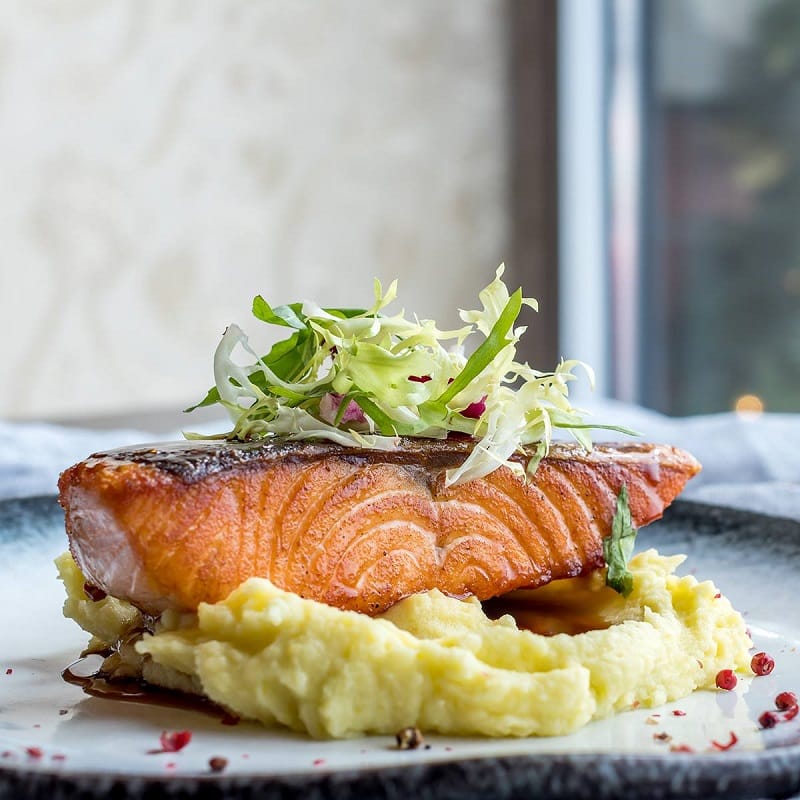
There are plenty of delicious options to choose from that will prevent waste and provide a tasty meal.
- One popular option is salmon salad, a crunchy and tangy mix similar to a tuna salad but made with salmon patties.
- Another great idea is to make a salmon bowl with farro, black beans, and tahini dressing.
- Leftover salmon also makes for a great Eggs Benedict variation, using fish instead of ham.
- If you’re feeling creative, try making crispy salmon hash, a delicious breakfast or brunch option.
- Finally, for those who love pasta, consider making a creamy salmon pasta dish for a quick and easy dinner.
Whatever route you choose, the possibilities are endless for using leftover salmon in a tasty and satisfying way.
Can I Reheat Cooked Salmon More Than 2 Times?
It is always tempting to reheat leftovers, especially for delicious salmon. However, reheating cooked salmon multiple times can affect its quality and texture. While it is safe to reheat salmon twice, consuming it soon after reheating is best.
The biggest mistake people make when reheating fish is applying too much heat, resulting in overcooked and dry salmon. To avoid this, adding some moisture, such as lemon juice, and sticking to a low temperature when reheating in the oven is recommended. The best practice is to limit the number of times the salmon is reheated to maintain its flavor and texture.
Is It Safe To Eat Cooked Salmon That Has Been In The Fridge For More Than Four Days?
If you wonder whether you can eat cooked salmon in the fridge for more than four days, the answer is no. According to the USDA, cooked salmon leftovers should be eaten within three to four days. After this, harmful bacteria can grow to unsafe levels, causing food poisoning if consumed. It’s crucial to properly store the cooked salmon and handle it carefully to maintain its quality and safety.
To extend its shelf life, wrap the salmon tightly with plastic wrap or aluminum foil and store it in an airtight container or resealable bag. Generally, cooked salmon can be safely stored in the fridge for up to 3-4 days if handled correctly. So, consume your cooked salmon within four days of cooking for optimal freshness and safety.
If Cooked Salmon Smells Bad But Looks Okay, Can It Still Be Eaten?
If cooked salmon smells bad but looks okay, there is a chance that it may not be safe to eat. According to the FDA, spoiled cooked salmon may have a rancid, sour, fishy, or ammonia-like smell. A slimy texture is another warning sign that the salmon may be bad. While it is okay for raw salmon to have a fishy smell before cooking, good fresh salmon should have a very little fishy smell and not be greasy.
If the salmon is old or spoiled, it may look dull or gray and may have a white, filmy residue. The sell-by date can also indicate how long the fish has been out of the water and whether it is still safe to consume. It’s always better to err on the side of caution and not consume fish that appears to have spoiled or smells bad, even if it looks okay.
Can I Refreeze Previously Frozen Salmon?
The answer is yes, but there are a few caveats to keep in mind.
- Firstly, ensuring that the salmon has been thoroughly thawed before refreezing it is important. Freezing partially thawed fish can lead to the growth of harmful bacteria.
- Secondly, it’s best to freeze the salmon as soon as possible after thawing it. Please don’t leave it out at room temperature for an extended period of time, as this can also promote bacterial growth.
- Finally, it’s important to make sure that the salmon is fresh and safe to eat in the first place. As long as you follow these guidelines, refreezing previously frozen salmon for up to 8 months is perfectly safe.
Is It Safe To Eat Cooked Salmon That Has Been In The Fridge For A Week Or Longer?
While cooked salmon can generally last up to 5 days in the fridge when stored correctly, the USDA recommends consuming leftovers within three to four days. However, cooked salmon can still be safe to eat even after being stored in the fridge for a week or longer, as long as it has been properly stored in an airtight container or plastic wrap. It is also safe to freeze cooked salmon if you wish to keep it longer.
Conclusion
In conclusion, it is important to know how long does cooked salmon last in the fridge to ensure that you are consuming a safe and healthy meal. Generally, cooked salmon can last up to 3-4 days in the refrigerator. However, it is essential to remember that the shelf life of cooked salmon is much shorter than raw salmon and should be eaten as soon as possible. Proper storage and handling are key to ensuring your food’s safety while maximizing its shelf life.
References:
- https://www.tastingtable.com/804915/the-absolute-best-ways-to-reheat-salmon/
- https://www.foodnetwork.com/healthyeats/healthy-tips/can-i-refreeze-meat-or-fish-that-has-thawed
- https://foodsguy.com/salmon-gone-bad/

Hey readers! Chip Holland here, and I’m a Manager of this website. My passion for writing about it only matches my passion for BBQ. Follow my blog for mouth-watering recipes, tips, and tricks for the perfect smoke, grill, and BBQ. I’m sure you won’t be disappointed!
